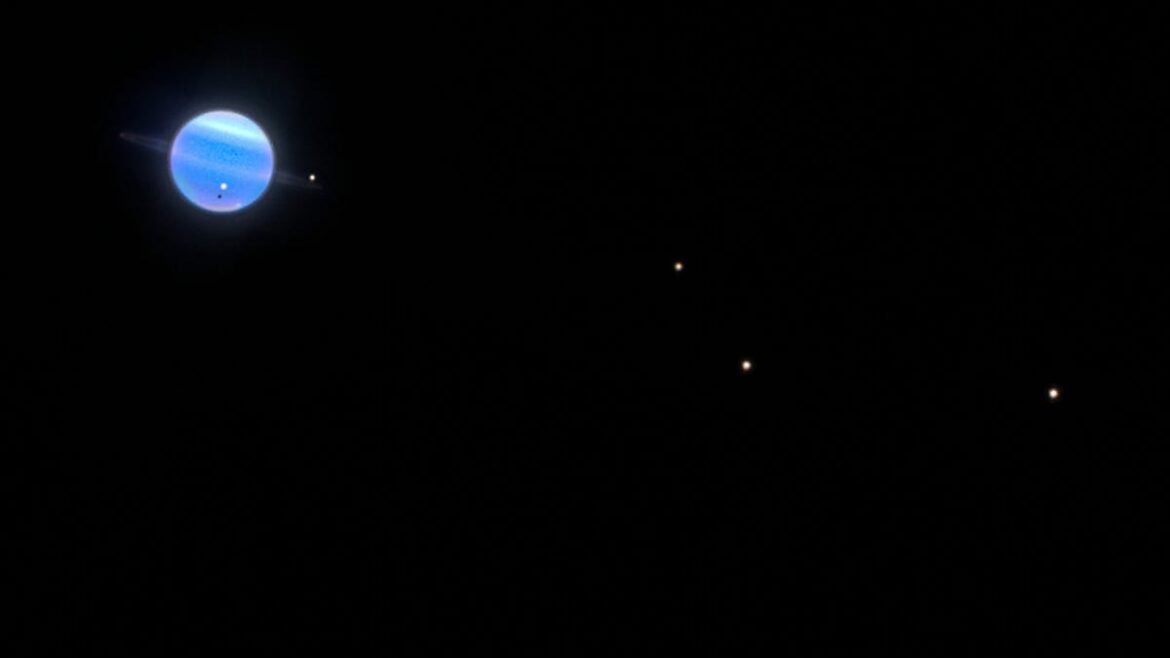Viewing Uranus’s largest moons with Hubble, astronomers hoped to find darkening on the trailing side. They found the exact opposite instead.
While Mercury, Venus, Mars, Jupiter, and Saturn have all been known since prehistoric times, it wasn’t until 1781 that humanity discovered Uranus. Just six years later, in 1787, the largest two Uranian moons, Titania and Oberon, were discovered, followed by Ariel and Umbriel in 1851. The next largest one, Miranda, wasn’t discovered until 1948, and the one after that, Puck, wasn’t found until Voyager visited it in the mid-1980s. While Voyager 2 imaged all of these Uranian moons (as well as discovering several other, smaller ones) during its fly-by in 1986, we weren’t able to acquire full 360° images of these worlds: just a few key snapshots, using 40+ year old technology, from afar.
Each of these moons, however, is tidally locked to Uranus, meaning that the same side of each moon always faces towards its parent planet, while the opposite side always faces away. These large moons all make complete orbits much more quickly than our own moon revolves around the Earth: with the four largest, Ariel, Umbriel, Titania, and Oberon completing one Uranian revolution in 2.5, 4.1, 8.7, and 13.5 days…

